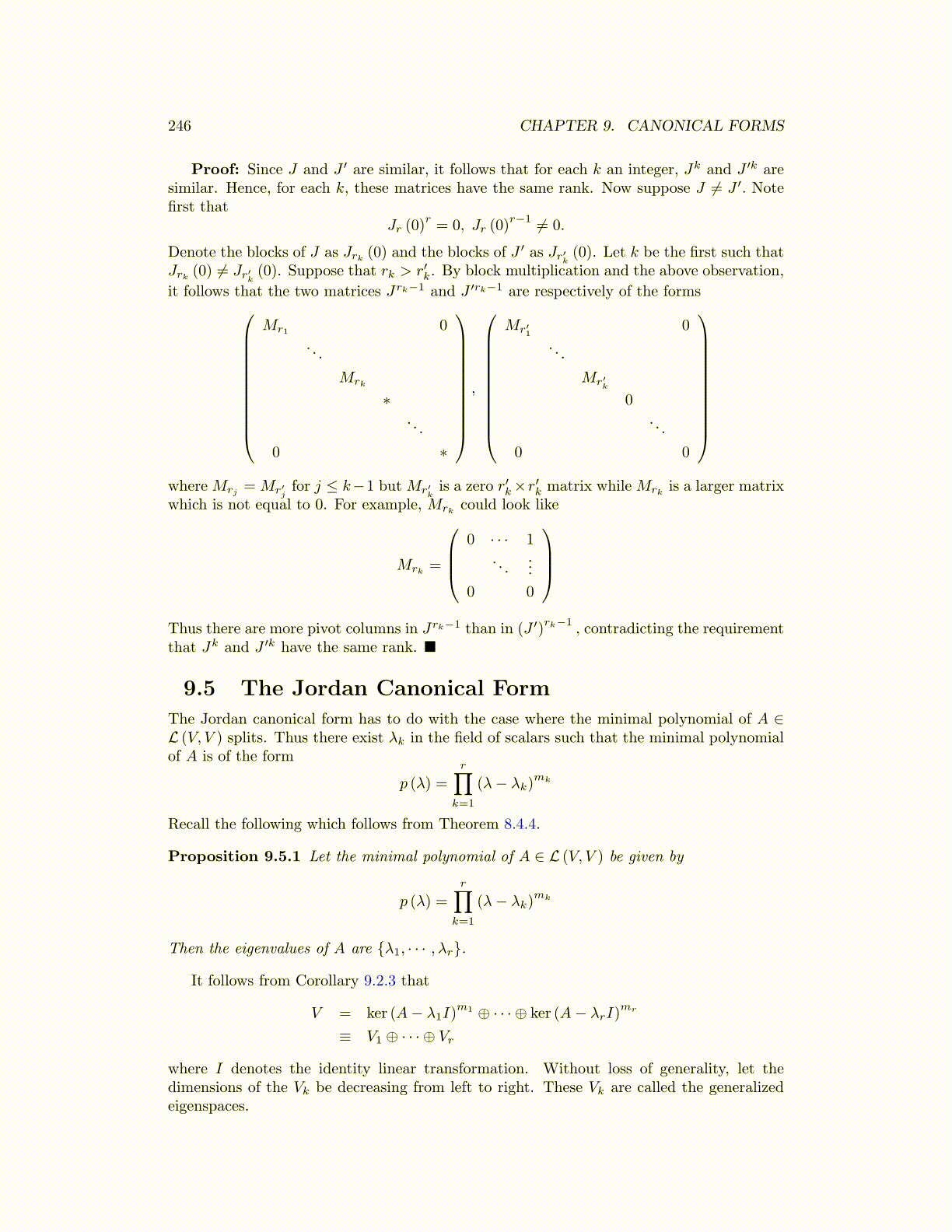
246 CHAPTER 9. CANONICAL FORMS
Proof: Since J and J ′ are similar, it follows that for each k an integer, Jk and J ′k aresimilar. Hence, for each k, these matrices have the same rank. Now suppose J ̸= J ′. Notefirst that
Jr (0)r= 0, Jr (0)
r−1 ̸= 0.
Denote the blocks of J as Jrk (0) and the blocks of J ′ as Jr′k (0). Let k be the first such thatJrk (0) ̸= Jr′k (0). Suppose that rk > r′k. By block multiplication and the above observation,
it follows that the two matrices Jrk−1 and J ′rk−1 are respectively of the forms
Mr1 0. . .
Mrk
∗. . .
0 ∗
,
Mr′10
. . .
Mr′k
0. . .
0 0
whereMrj =Mr′j
for j ≤ k−1 butMr′kis a zero r′k×r′k matrix whileMrk is a larger matrix
which is not equal to 0. For example, Mrk could look like
Mrk =
0 · · · 1
. . ....
0 0
Thus there are more pivot columns in Jrk−1 than in (J ′)
rk−1, contradicting the requirement
that Jk and J ′k have the same rank. ■
9.5 The Jordan Canonical Form
The Jordan canonical form has to do with the case where the minimal polynomial of A ∈L (V, V ) splits. Thus there exist λk in the field of scalars such that the minimal polynomialof A is of the form
p (λ) =
r∏k=1
(λ− λk)mk
Recall the following which follows from Theorem 8.4.4.
Proposition 9.5.1 Let the minimal polynomial of A ∈ L (V, V ) be given by
p (λ) =
r∏k=1
(λ− λk)mk
Then the eigenvalues of A are {λ1, · · · , λr}.
It follows from Corollary 9.2.3 that
V = ker (A− λ1I)m1 ⊕ · · · ⊕ ker (A− λrI)
mr
≡ V1 ⊕ · · · ⊕ Vr
where I denotes the identity linear transformation. Without loss of generality, let thedimensions of the Vk be decreasing from left to right. These Vk are called the generalizedeigenspaces.